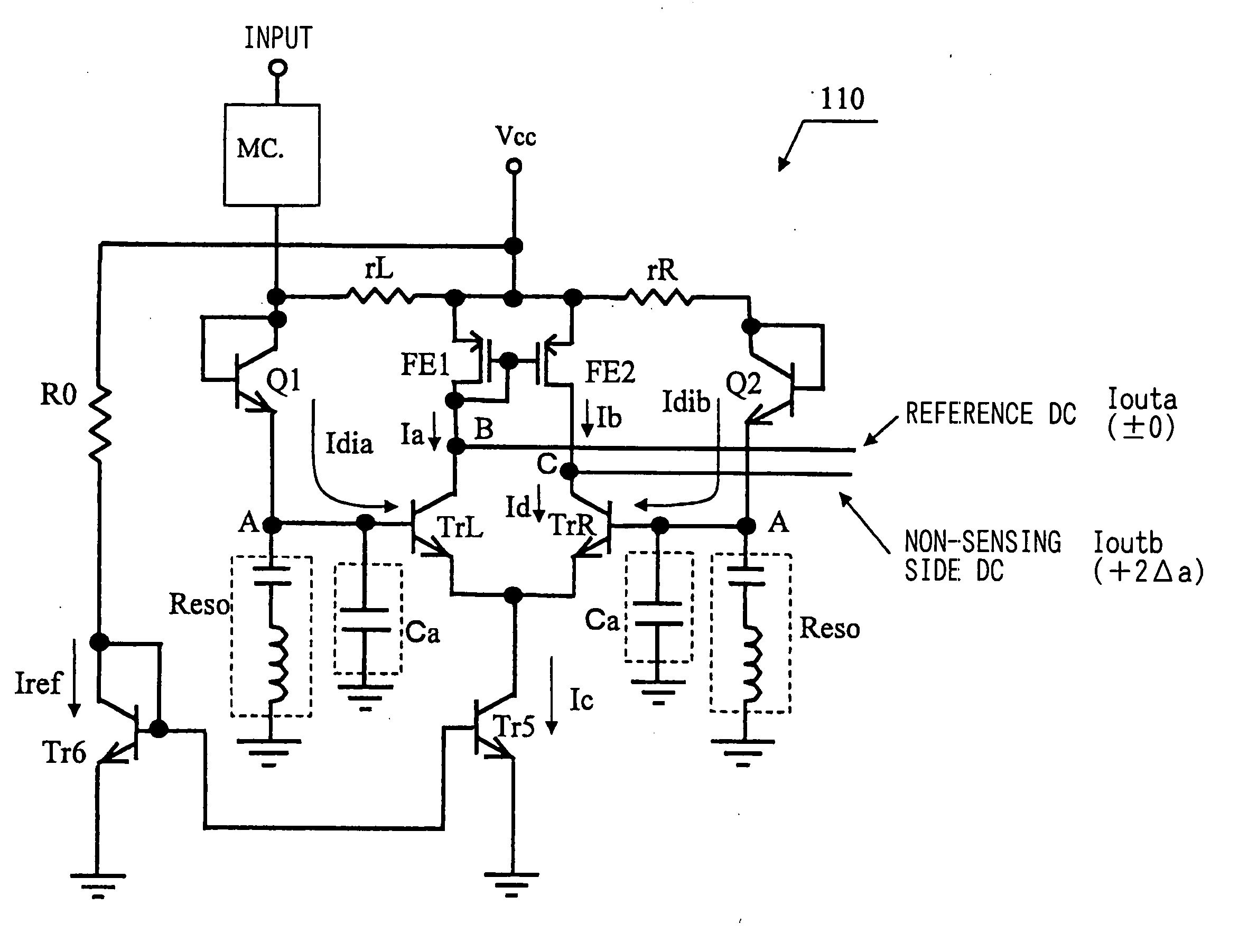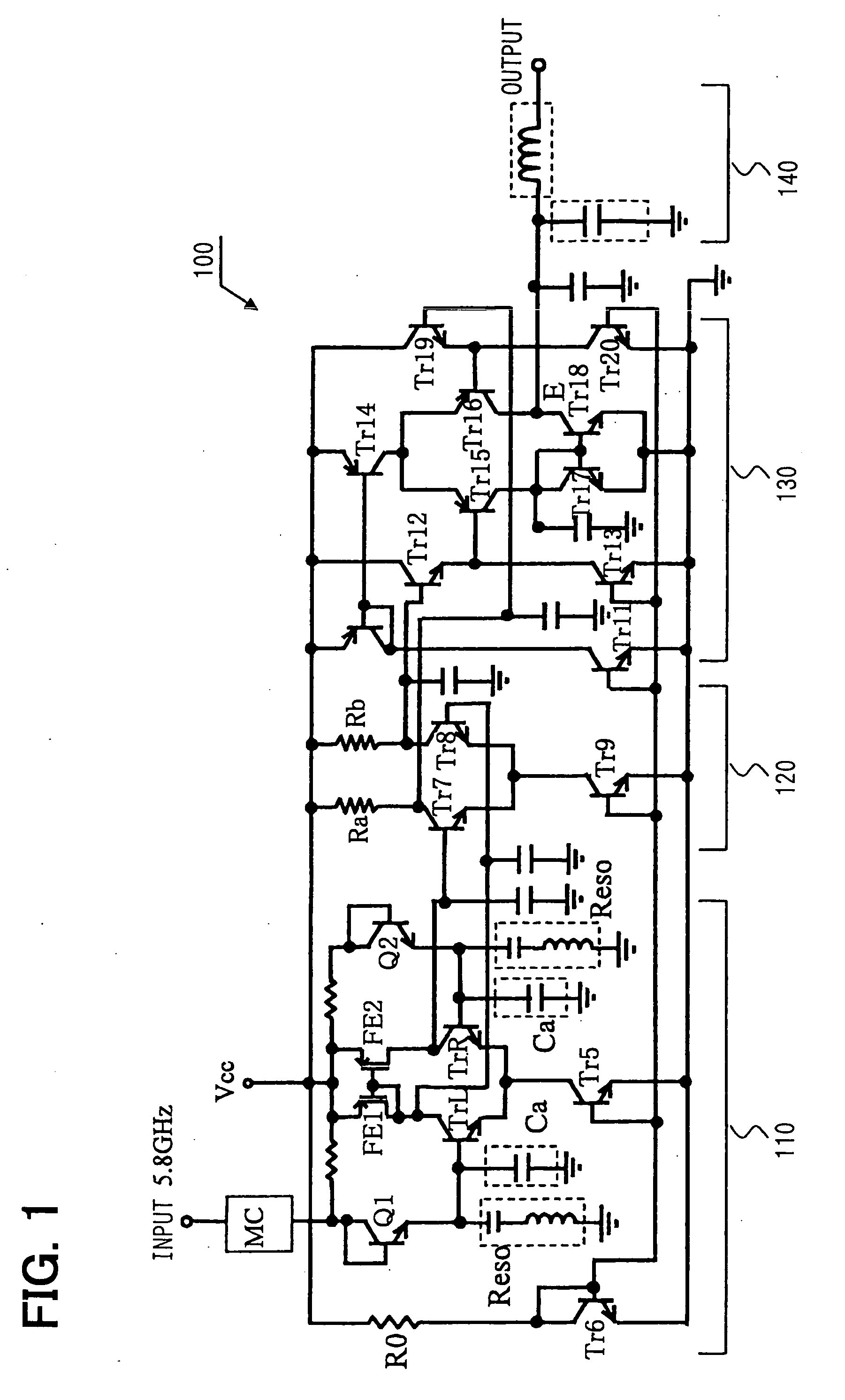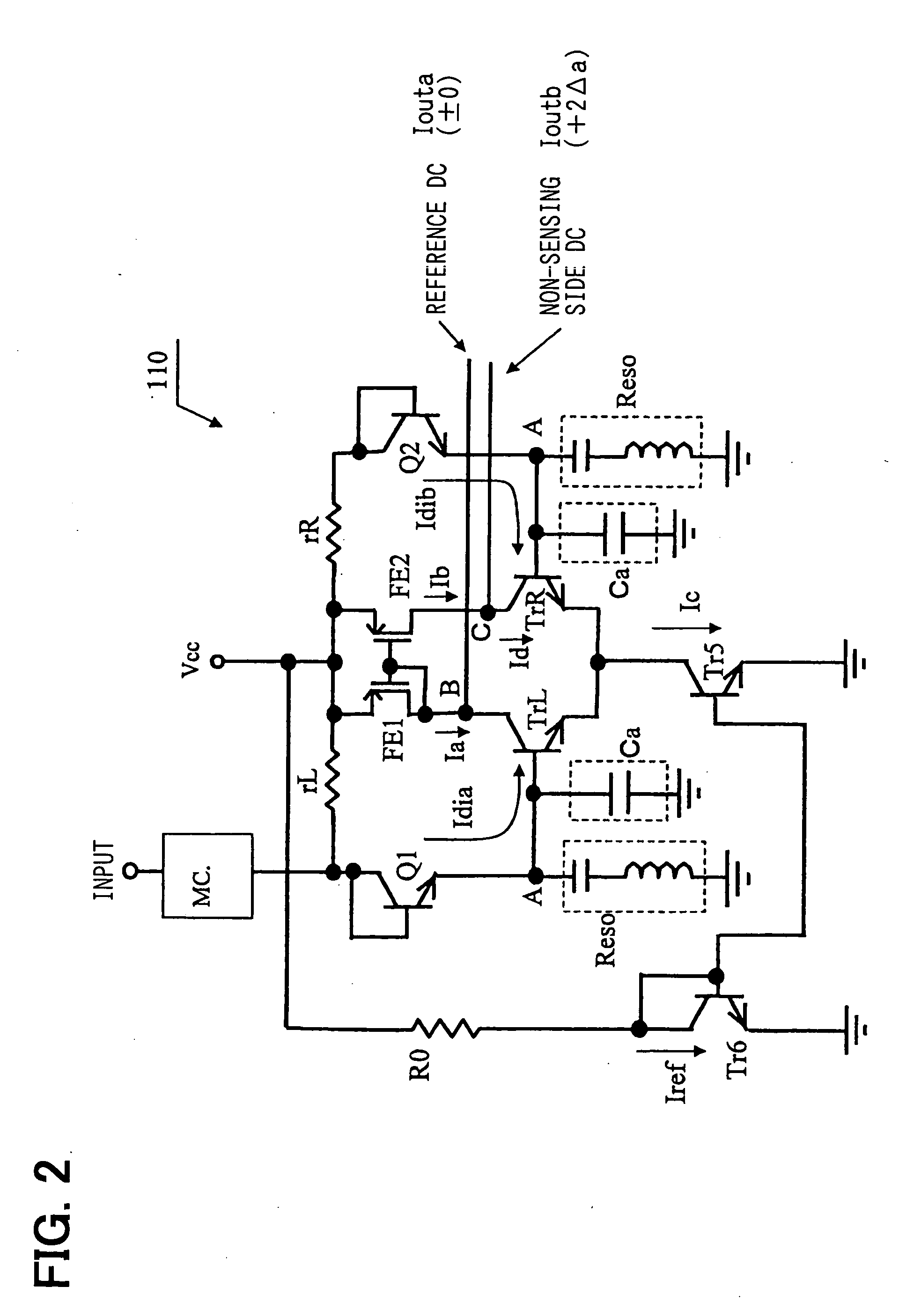Activation signal output circuit and determining circuit
a signal output circuit and signal output technology, applied in the direction of electronic switching, pulse technique, instruments, etc., can solve the problems of difficult suppression of power consumption during standby time difficult to achieve target lower power consumption, etc., to enhance detection sensitivity, sharply reduce erroneous detection, and improve performance
- Summary
- Abstract
- Description
- Claims
- Application Information
AI Technical Summary
Benefits of technology
Problems solved by technology
Method used
Image
Examples
first embodiment
[0138]FIG. 1 is a circuit diagram of a start signal output circuit 100 in this embodiment. The start signal output circuit 100 includes an RF / DC conversion circuit to which radio frequency power (RF) of specified frequency is inputted and from which a direct current potential (DC) is outputted.
100>
[0139] In the start signal output circuit 100, input power (radio frequency) is first converted into a DC via a matching circuit, a sensing diode Q1 and a low-pass filter (Reso, Ca), and the DC is amplified by a transistor TrL of differential pair transistors, thereby to amplify the potential difference between the collector terminals of the differential pair transistors TrL and TrR. The potential of the base terminal of the transistor TrR is internally set by employing the fifth invention of the present application.
[0140] In a determination circuit 120 at a succeeding stage, a threshold value (offset) is set for the DC potential thus detected and amplified in and outputted from a detect...
second embodiment
[0188] The second embodiment exemplified in conjunction with the drawings of FIGS. 13 through 24 is in order to solve these problems. As means for solving the problems, by way of example, the foregoing embodiment is modified so that a voltage doubler wave-detector circuit can be utilized for the detection / amplification circuit, an S / N ratio is enhanced by employing MOSFETs of large gates, or it is permitted to obtain a large amplitude by introducing active loads configured of transistors, into the determination circuit. Further, a combination with a binarization circuit utilizing CMOS is considered so that the power consumption can be further lowered.
[Voltage Doubler Wave-Detector Circuit]
[0189]FIG. 13 is a circuit diagram exemplifying a start signal output circuit 200 in the second embodiment. Further, FIG. 14 is a circuit diagram of a detection / amplification circuit 210 which is included in the start signal output circuit 200. In the second embodiment, first of all, as shown in ...
third embodiment
[0226] As a method for attaining a large amplitude (gain) in the determination circuit (example: determination circuit 120 in FIG. 1), there is described, for example, the method in which the appropriate load resistors (ra, rb and rc) are employed as exemplified in detail in FIG. 3 in the foregoing first embodiment. Alternatively, however, there is a method in which the gain of the differential pair transistors of the differential amplifier of the determination circuit is enhanced. The method is, for example, one in which Darlington connection is employed for the part of the differential pair transistors of the differential amplifier of the determination circuit.
[0227]FIG. 25 exemplifies a determination circuit 222 in which the determination circuit 120 (FIG. 3) in the foregoing first embodiment is reconfigured using the Darlington connection. Incidentally, also here, load resistors are set at Ra
PUM
 Login to View More
Login to View More Abstract
Description
Claims
Application Information
 Login to View More
Login to View More - R&D
- Intellectual Property
- Life Sciences
- Materials
- Tech Scout
- Unparalleled Data Quality
- Higher Quality Content
- 60% Fewer Hallucinations
Browse by: Latest US Patents, China's latest patents, Technical Efficacy Thesaurus, Application Domain, Technology Topic, Popular Technical Reports.
© 2025 PatSnap. All rights reserved.Legal|Privacy policy|Modern Slavery Act Transparency Statement|Sitemap|About US| Contact US: help@patsnap.com



